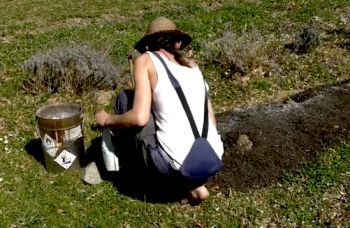A Taste of Circularity: Meet Drive 0

Discover how the EU-funded project Drive 0 is developing circular deep renovation solutions and supporting consumer-centered business models for 7 specific study and demonstration cases as real environments.
Ana Tisov is the coordinator of Drive 0, an EU-funded project to accelerate and improve deep renovation processes, with consumers at the center. The aim is to make these processes environmentally friendly, cost-effective and more attractive for consumers and investors.
Discover with her the goals achieved and the prospects of this project.
When did the Drive 0 project start, and who’s on board?
This H2020 project started in October 2019 and runs for 4 years. The team consists of 21 partners ranging from architectural firms and industries to research and education institutions from 7 EU countries. Moreover, to maximize the impact around the whole EU, we have 3 important EU umbrella organizations on board.
What are your goals?
We aim to contribute to the decarbonization of the EU’s building stock by enhancing consumer-centered and locally-based circular renovation processes. We do not look at renovations only from an operational perspective with energy efficiency improvements, but also from an embodied energy perspective. We start by redeveloping proven deep renovation products and concepts based on locally available materials. And we focus on easy to install plug & play prefab solutions for building envelope elements and building services.
Which of these goals have been pursued so far and how?
We’ve optimized all the Drive 0 solutions and products planned. Now we’re applying them to the 7 demonstration sites. The site in Estonia has already completed its renovation and the post-monitoring is currently underway. And so far, we can see some positive developments: new types of joints and fixing elements for prefab wooden panels, second use of quite some construction & installation elements, circular economy business model improvements, satisfied home occupants, etc.
What are the main technological and process innovations that Drive 0 intends to bring to the circular economy applied to construction?
As for technological innovation, we looked at how to improve existing renovation solutions by integrating various circular strategies: use of more environmentally friendly materials, reusing waste materials, decreasing the number of components, applying design for disassembly principles, etc. From a process perspective, the innovation common to all 7 demonstration sites was a different organization of the project value chain, where stakeholders have different responsibilities and roles compared to a traditional renovation project.
(Still, we need to approach circular renovation from a holistic point of view. So complementary innovation is key, i.e. modularity will never be a success if you do not work on social and business innovation too).
What do you mean by a “human-centered” approach and why is it so important?
If circular construction solutions are to work on a large scale, then we need people to understand and adopt them. With the fast pace of technological advances in the construction sector, we have to ensure end-users embark on the innovation journey and appreciate the added value.
We clearly need to put people first and raise awareness in communities about the tangible and direct benefits for them. Only by doing so can we introduce circularity. Because at the moment, there remains some reluctance and risk among home occupants, investors, manufacturers, installers, and other stakeholders.
As part of the International Social Housing Conference, you co-organized a workshop with Housing Europe, one of the HOUSEFUL partners, enhancing circular building renovation for social operators. How important is social housing as a target for Drive0 and why?
Much building stock is owned by social housing providers, and so this offers great potential for upscaling and replicating our project’s solutions and products across the EU. Drive0’s targets are in line with the EU Green Deal to decarbonize Europe, and our solutions for social housing are both environmental and cost-effective. A small but growing number of state-of-the-art circular public and social housing projects now prove there is significant potential for cost savings for housing providers in the long term by moving from a ‘linear’ to a ‘circular’ model.




